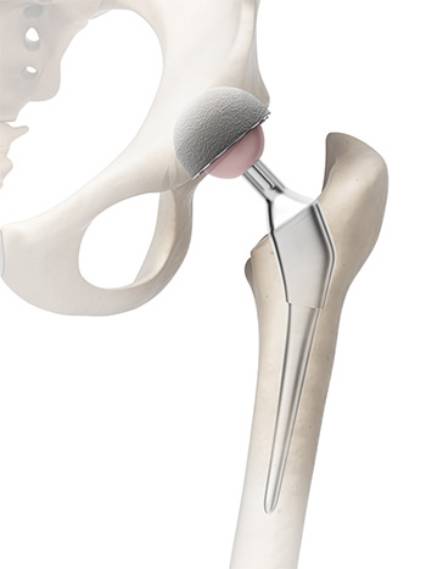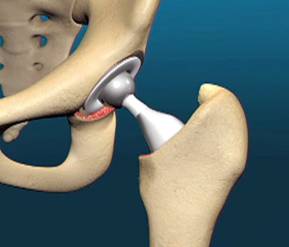Do you require any assistance? Simply reserve your appointment online below
Cemented Hip
Get Relief
Bone cements have been used very successfully to anchor artificial joints such as the hip, knee, shoulder and the elbow joints..Artificial joints (referred to as prostheses) are anchored with bone cement. The bone cement fills the free space between the prosthesis and the bone.
This is necessary because the human hip is acted on by approximately 10-12 times the body weight and therefore the bone cement must absorb the forces acting on the hips to ensure that the artificial implant remains in place over the long term.
If a patient suffering from chronic joint pain due to arthritis opts to have a joint replacement surgery, the orthopedic surgeon will replace the existing joint surfaces with artificial joint prostheses which must adhere to the patient’s natural bone.
The drawback to using bone cement is that it may degrade over time and bits of cement can break off, potentially causing problems

Types of prosthesis

- A cemented joint prosthesis
uses fast-drying bone cement to help affix it to the
- A cementless joint prosthesis
sometimes called a press-fit prosthesis, is specially textured to allow the bone to grow onto it and adhere to it over time.
Advantages of using cemented hip prosthesis
There are a few advantages to using bone cement in joint replacement surgeries:
Bone cement allows a surgeon to affix prosthetic joint components to a bone that is slightly porous from osteoporosis.
A small amount of antibiotic material can be added to the bone cement, helping to decrease the risk of post-surgical infection.
The bone cement dries within 10 minutes of application, so the surgeon and patient can be confident the prosthetic is firmly in place.
Disadvantages of using cemented hip prostheses
- A breakdown of the cement can cause the artificial joint to come loose, which may prompt the need for another joint replacement surgery (revision surgery).
- The cement debris can irritate the surrounding soft tissue and cause inflammation.
- While rare, the cement can enter the bloodstream and end up in the lungs, a condition that can be life-threatening. This risk is greatest for people who undergo spinal surgeries.

Complications of Cemented prostheses

Exactly how often these complications occur following specific types of joint replacement surgeries is uncertain.
Not all patients with bone cement debris experience symptoms. Bits of cement debris can be removed arthroscopically to alleviate or prevent symptoms.
In rare cases, patients have an allergic reaction to the bone cement and must undergo a second surgery to remove the glue and prostheses.
